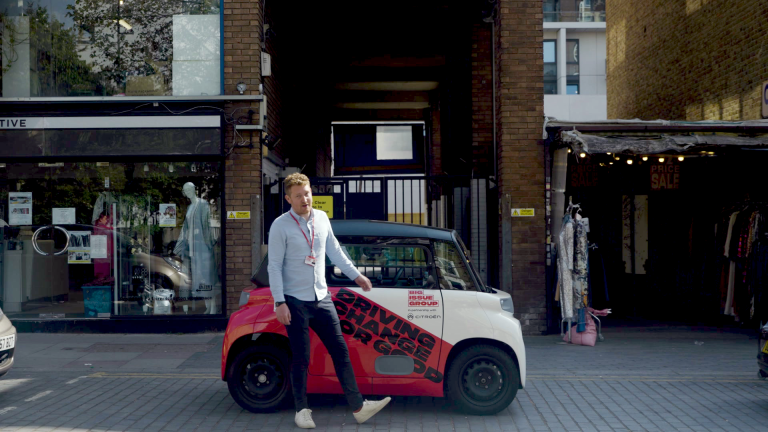We’re starting to get an idea of what this will look like. In late May, the government pledged its largest-ever apprenticeship budget – around £3 billion, raised from a levy on large employers – to train the “next generation of builders”. Controversially, money will be redirected away from older learners to those aged 16-21.
“A skilled workforce is the key to steering the economy forward, and today we’re backing the next generation,” education secretary Bridget Phillipson said at the time.
With nearly a million young people not in education, employment or training (NEET), experts have broadly welcomed the move. But is it enough? Skills funding is still down at least 20% since 2010, points out Stephen Evans, chief executive of the Learning and Work Institute.
“Everyone says, ‘Our thing is really important to all of the government’s missions, so it should get the money,’” he tells Big Issue. “But if you’re serious about building homes, delivering clean energy, and upgrading infrastructure, you need skilled people. That means investing in skills… there’s still a big funding gap.”
Two birds, one stone
The government has two birds to kill: construction vacancies and youth economic inactivity. Apprenticeship reform, it hopes, is the stone.
It is betting big on infrastructure. The spending review included £113bn in capital investment – from housebuilding and new prisons to school and hospital upgrades. Major projects like Sizewell C nuclear power station and East West Rail are also got the green light. But big plans need boots on the ground. Take the government’s goal to build 1.5 million homes. The Home Builders Federation estimates that for every 10,000 homes, 30,000 workers across 12 trades are needed.
Advertising helps fund Big Issue’s mission to end poverty
Read more:
Traditionally, skills gaps were filled by workers from the European Union – but post-Brexit restrictions have shrunk that labour pool. The Construction Industry Training Board estimates the sector will need an additional 251,500 workers by 2028 to meet expected demand.
Apprenticeships could be part of the answer. These programs combine on-the-job training with study and are open to anyone aged 16 or older in England. They range from Level 2 (GCSE-equivalent) to Level 7 (master’s degree) and last between one and five years.
But there are barriers blocking young people from taking these up, says Sarah Yong, director of policy and external affairs at Youth Futures Foundation. Since 2015-16, apprenticeship starts for under-19s have plummeted by 40%.
Meanwhile, around 13% of 16- to 24-year-olds – nearly one million – are NEET. Almost half have never had a job.
“You want a system that works for the economy and helps solve the NEET challenge as well,” says Yong, “There’s definitely a way those two things can be thought of together.”
Advertising helps fund Big Issue’s mission to end poverty
Apprentices can do wonders for young people – just ask Chelsea. The 20-year-old from Shropshire recently completed a year-long level two apprenticeship in customer service
“I did A-levels, I did college, I was going to go to university. I had all that planned out. I had everything ready to apply,” she tells Big Issue. “And then at the very last minute, I realised, ‘Oh, I’ve got extreme burnout.’ I’m not going to be in the right state of mind to be able to sit and do three to four more years of in-classroom education.”
She didn’t want to step away from education – and found a placement at a local employment law firm.
“I felt like I was part of the team. I felt like, I guess you could say I felt like an adult, because I was 18, doing a job that had quite a lot of responsibilities and deadlines… it gave me that kind of support and structure I think I needed at that time.”
So if they’re so beneficial, why have young apprenticeship starts plummeted? Part of the problem, advocates say, is the structure of the apprenticeship levy. Introduced in 2017, the policy requires large employers to contribute 0.5% of their payroll toward training. Unused funds help subsidise apprenticeships at smaller businesses.
But many large firms have used the levy to train existing staff – often at Level 6 or 7 – rather than investing in entry-level apprenticeships.
Advertising helps fund Big Issue’s mission to end poverty
“The levy encourages training, which is great,” Yong says. “But there are few restrictions on what it can be used for.”
A CIPD and Youth Futures Foundation survey found 54% of employers redirected levy funds to training current staff, not new starters. Since the levy’s introduction, employer investment in training has dropped 26%.
“Level 7 apprenticeships are often going to people who are already senior leaders, they may already have a degree,” says Evans. It means it can be hard to secure a placement. “Straight after college, finding the apprenticeship was extremely difficult,” Chelsea tells Big Issue. “You might have to move out of your area as a young person.”
The government has promised to replace the levy with a more flexible ‘Growth and Skills Levy’. It’s not wholly clear yet what this will look like, but spending plans for the existing apprenticeship budget suggests a focus on young people. They include new foundation apprenticeships in key sectors like construction, engineering and healthcare, and 120,000 new training opportunities.
And, from January 2026, only 16- to 21-year-olds will be eligible for government-funded Level 7 apprenticeships.
“It’s essentially saying that the investment can still go to the young person,” says Yong. “And we know that in the long term, that investment, you know, will pay off.”
Advertising helps fund Big Issue’s mission to end poverty
But will it go far enough? According to the Institute for Fiscal Studies, public spending on adult education and apprenticeships in England will remain 25% lower in 2024-25 than in 2010-11, even after recent increases. The Learning and Work Institute also reports that the adult skills budget in England has been cut by £1bn since 2010.
“That’s about 20% real-terms cuts,” said Evans. “This new funding may reduce that gap a little bit, but we don’t know what’s going to happen to the classroom-based stuff.”
Not all of the money raised by the levy has gone back into training, he added. “That Growth and Skills Levy is not yet defined,” says Yong. “We’d like to see them consider ring-fencing 50% of funds for younger people on level two and three apprentices. We’d love to see a system where any young person who wants an apprenticeship can have one.”
The Labour government has promised a youth guarantee to offer every 18- to 21-year-old in England access to an apprenticeship, quality training and education opportunities or help to find a job. It’s currently being trialled in eight regions, with £45m of funding.
But it’s not enough, according to the Learning and Work Institute. They’ve called for the Youth Guarantee in England to be expanded to those aged 16-24, and for the government to provide financial incentives to employers who take on apprentices.
Without this kind of bold reform, the UK risks falling short – not just on youth employment, but on its biggest infrastructure promises.
Advertising helps fund Big Issue’s mission to end poverty
“The government wants clean energy by 2030,” Evans said. “That means someone has to build the solar panels. Someone has to stick them on the roof… that means training people. And that means investment.”
Promises are easy to break. Sign Big Issue’s petition for a Poverty Zero law and help us make tackling poverty a legal requirement, not just a policy priority.
Do you have a story to tell or opinions to share about this? Get in touch and tell us more. Big Issue exists to give homeless and marginalised people the opportunity to earn an income. To support our work buy a copy of the magazine or get the app from the App Store or Google Play.









